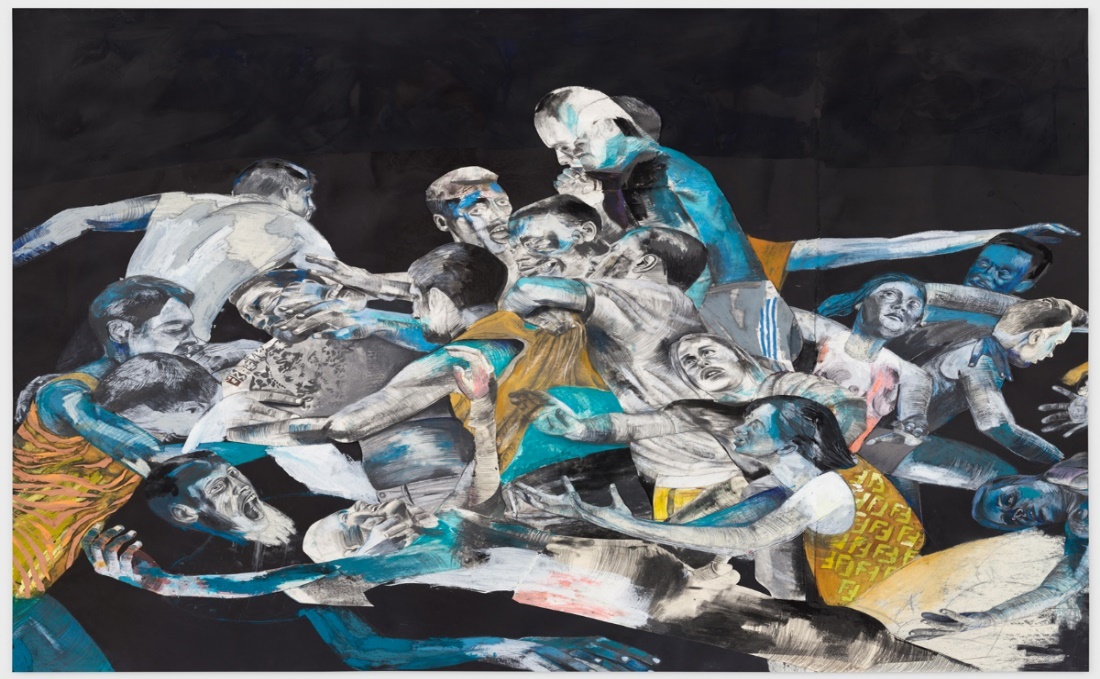Introduction
Visiting a museum is impressive as one can view different artifacts with unique impressions and expressive meanings. Art is among the most inspiring creations people interact with and represent different aspects of human life. Different exhibitions provide critical information about different artists, the times they lived in, and, most importantly, the various styles of art used to develop drawings and paintings in various historical art movements. My visit to the Benton Museum of Art at Pomona College in Claremont, California, on November 15, 2022, was a remarkable event as I explored different types of art and photographs exhibited in the museum. Among the exhibits that created an unforgettable impression in my mind was Wardell Milan’s image, “My knees are getting weak, and my anger might explode, but if God gets us, then we’ll be alright” (Valentine). Milan’s painting shows how human experience creates the need for spirituality, where the use of color and form makes the work reflect his source of inspiration.
Discussion
Wardell Millan’s exhibition was striking as the art displays a unique painting style exploring various materials to produce the desired vestige. The painting was what I expected as it had varied art components such as color, reflected in aspects of real life, and the theme is critical to human life. Religion is one of the critical and sensitive aspects of human life, and the message sent through the art was encouraging. The art style is unique in form and in the use of color to achieve the desired emotion presented to the viewer.
In the painting, Wardell used charcoal, oil pastels, graphite, colored pencils, pastels, and a China marker to create the image on hand-dyed paper. The image measures 51 by 59 by 12 inches (Valentine). The painting contains images of various people in different postures expressing distinct emotions. The painting portrays a religious message as most people’s posture in the image depicts the tribulations humans experience. The title displays sad and unbelievable human moments that make them look up to the sky, where they can get spiritual encouragement (Millan). The design depicts such a message in various images and colors. The dull colors in the image create a sad and hopeless mood.
Milan is usually influenced by other works that use linear and non-linear styles. His diversity in the arts is influenced by aspects such as literature, human nature, and philosophy. The painting is inspired by human nature and theological philosophy, as shown in Figure 1. Through such inspiration, he captured an emotional piece of art that encouraged people to have faith. Milan’s work resembles the works of Diane Arbus, an American photographer specializing in black-and-white portraiture inspired by human nature. Her photographs covered various human activities during their normal routines (Miller). Her photography resembled a documentary of the perfect society as it exposed people’s actions behind the mask (Ceemrecelik). The images showed how she loved capturing moments and humanity whenever he visited, providing a perfect image of society.
Conclusion
In conclusion, Wardell uses art to inspire people through the ability to express varied themes that portray human emotions and meditation through images and color. Art is considered to play a critical role in entertaining, informing, and educating society about the things happening in the world around them. Wardell’s image inspires people to pray and meditate. Such aspects are considered critical. In dealing with the challenges, humans face in their daily lives through images and color.

Works Cited
Ceemrecelik. “The Portrait of an Art Revolution: Diane Arbus.” Arcadia, Arcadia, Web.
Millan, Wardell. “Nine Black Artists and Cultural Leaders on Seeing and Being Seen.” The New York Times, The New York Times, Web.
Miller, M.h. “A New Look at a Diane Arbus Exhibition, 50 Years Later.” The New York Times, The New York Times, Web.
Valentine, Victoria L. “On View: ‘Wardell Milan: Amerika. God Bless You If It’s Good to You’ at Bronx Museum of the Arts in New York.” Culture Type, Web.